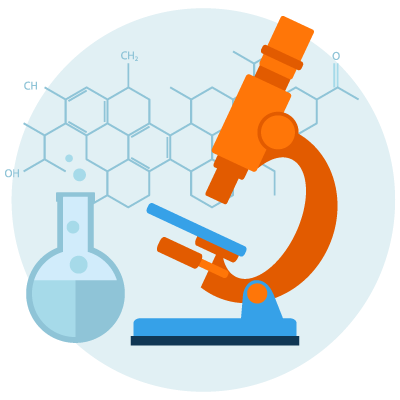
Being able to correctly monitor the level of MS activity is always important in clinical care, but particularly so during a clinical drug trial where the ability for a new drug to stop MS activity is being assessed. Currently, monitoring progression of MS over time in clinical trials is challenging and there is no one test which can accurately make that assessment.
We currently know that as MS progresses, inflammatory cells within the brain called microglia are active, and likely to be contributing to disease progression over time. However, there are different types of microglia, pathogenic (indicating active disease) and reparative (indicating a repairing phase and less disease activity). At present, there is no way to distinguish between the two types of microglia to measure the microglial response and to know if MS progression is occurring.
Dr Vivash and her team aim to develop techniques to identify both the extent and the nature of this microglial response. They plan on doing this by developing a new compound to be used in a non-invasive PET (positron emission tomography) scan to determine the level of disease activity and MS progression. This could help fill an unmet need in clinical trials for new MS drugs by helping to identify effective drugs to treat progressive MS sooner and more accurately.
Using medicinal chemistry, the team have identified three potent compounds for potential use in PET imaging. Two of these compounds have been selected for further analysis, which involved measuring their ability to cross the blood brain barrier (BBB). This analysis revealed that the two compounds can penetrate the brain and spinal cord, and can freely move across the BBB, as well as maintain excellent blood and brain concentrations. Additionally, laboratory work has predicted that these two compounds have low non-specific binding to tissue. This work indicates that these compounds have met all the critical parameters needed for use in PET imaging.
The team next conducted PET imaging in laboratory models of MS to test one of the new compounds. They found rapid uptake of the compound, but it was rapidly washed out of the brain and there was no difference in uptake between laboratory models of MS and laboratory models without MS. To understand why this compound has very low binding to brain tissue, the team performed studies in a laboratory model of epilepsy, which has more widespread neuroinflammation than the model of MS. The compound was also washed out rapidly from the brain in this model.
As a result of this outcome, Dr Vivash and her team assessed five front-running compounds in brain binding assays for potential use in PET imaging. They identified a compound that was similar to the first identified compound but had a higher level of compound freely available to bind to brain tissue. The team are now assessing this compound in a laboratory model which will determine if it is more suitable for PET imaging of the brain and spinal cord.
This work has been presented at national and international conferences and has been published in a scientific journal. The team are also in the process of submitting another manuscript for publication.
Updated: 19 January, 2021

Laboratory research that investigates scientific theories behind the possible causes, disease progression, ways to diagnose and better treat MS.

Research that builds on fundamental scientific research to develop new therapies, medical procedures or diagnostics and advances it closer to the clinic.

Clinical research is the culmination of fundamental and translational research turning those research discoveries into treatments and interventions for people with MS.

